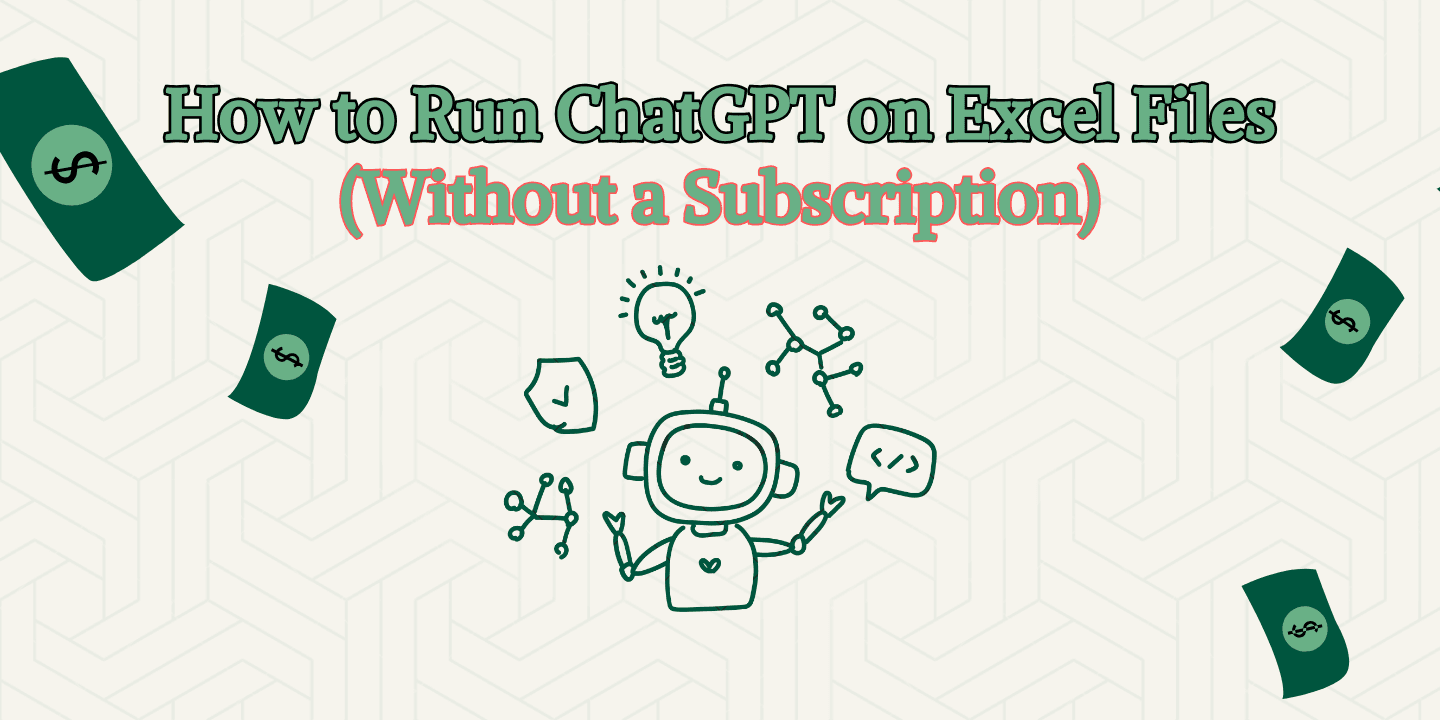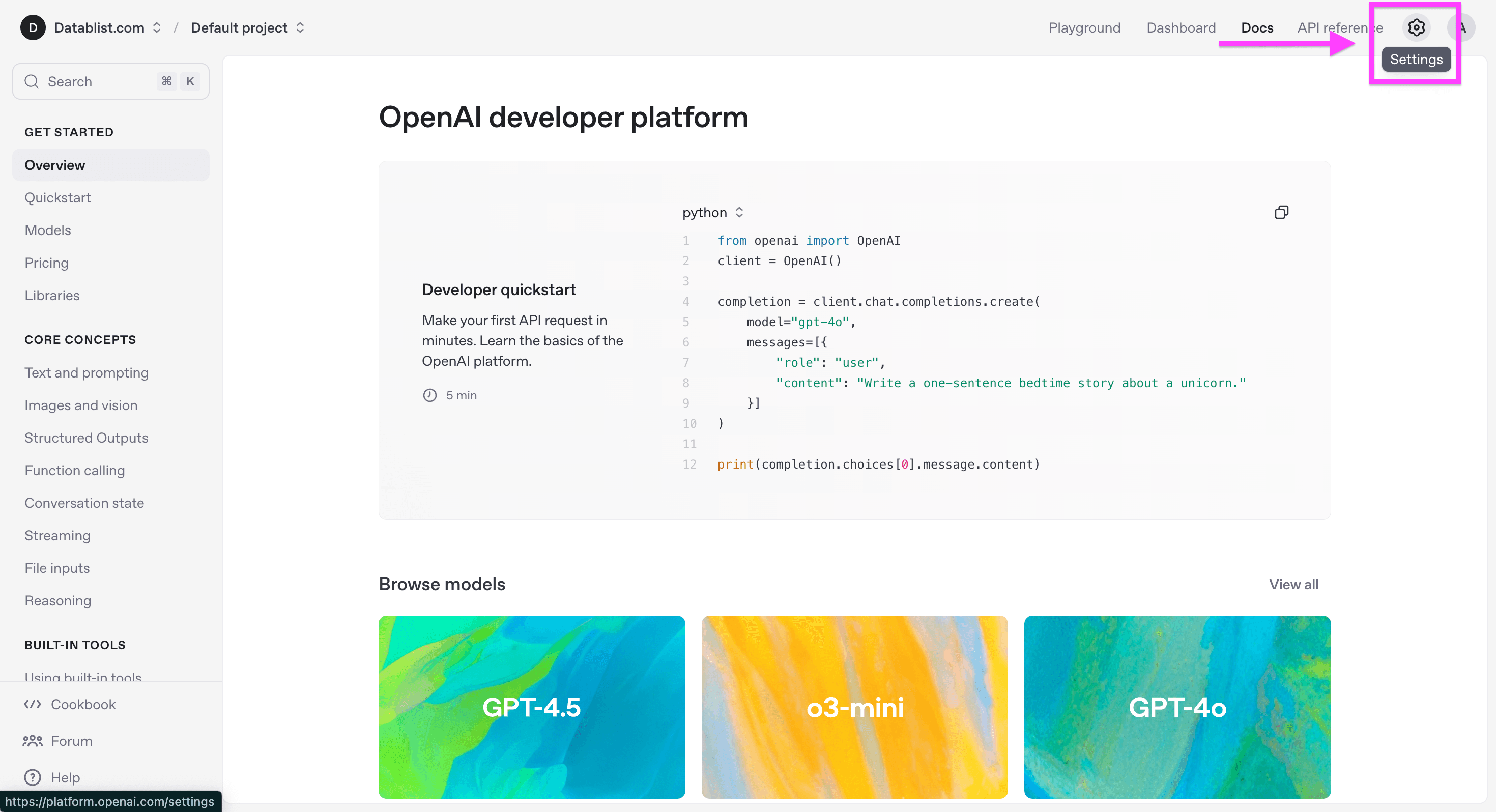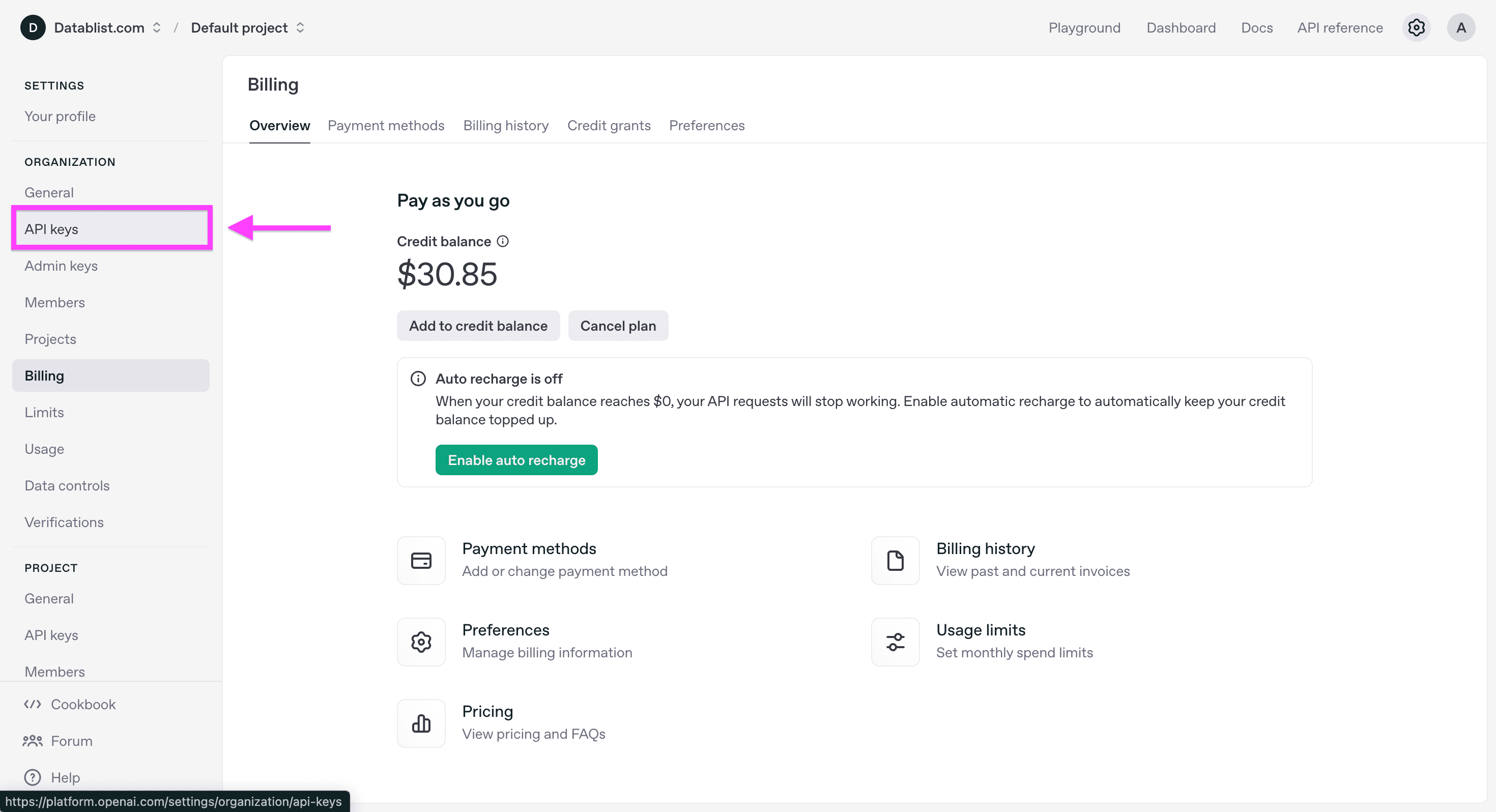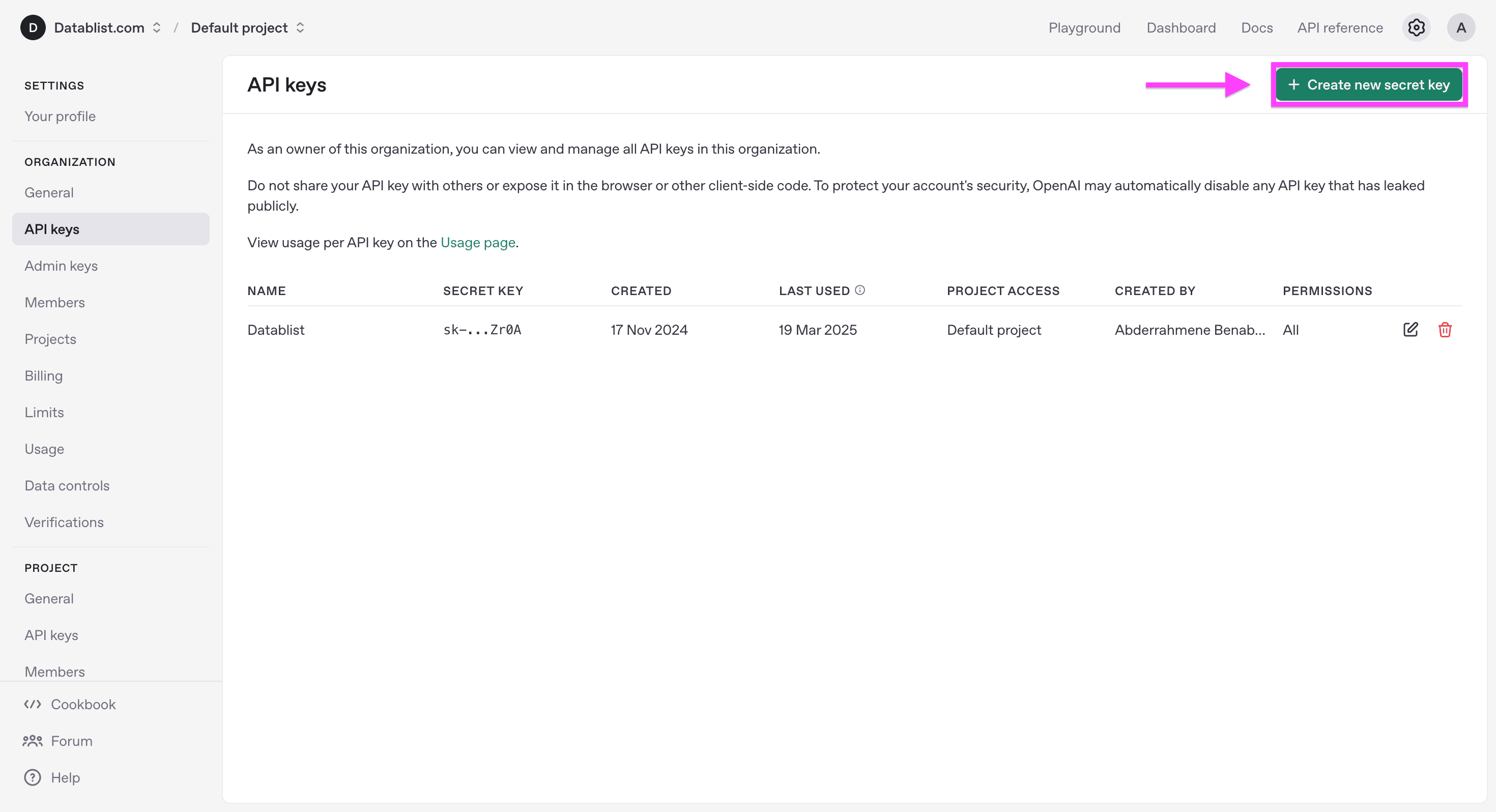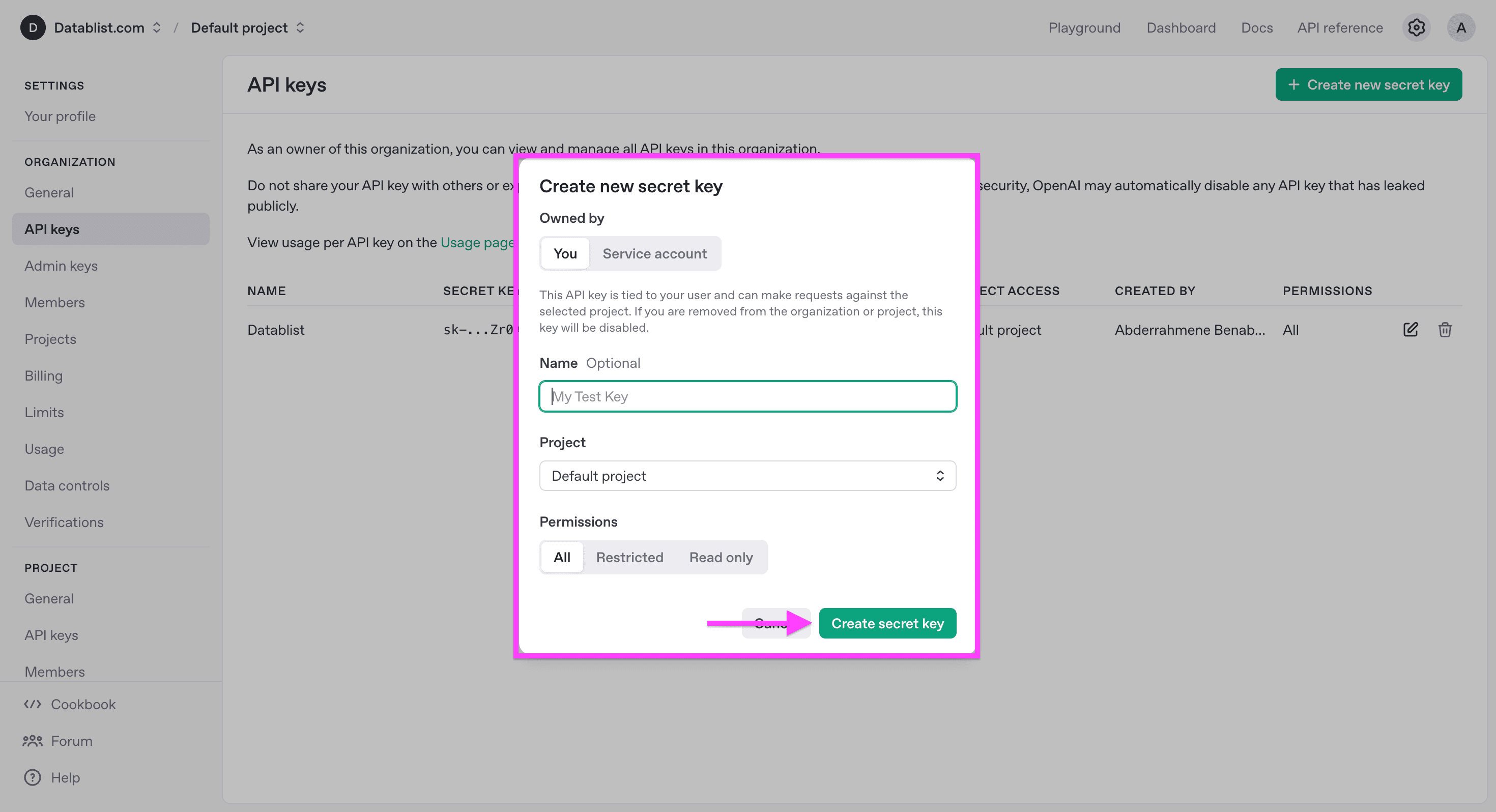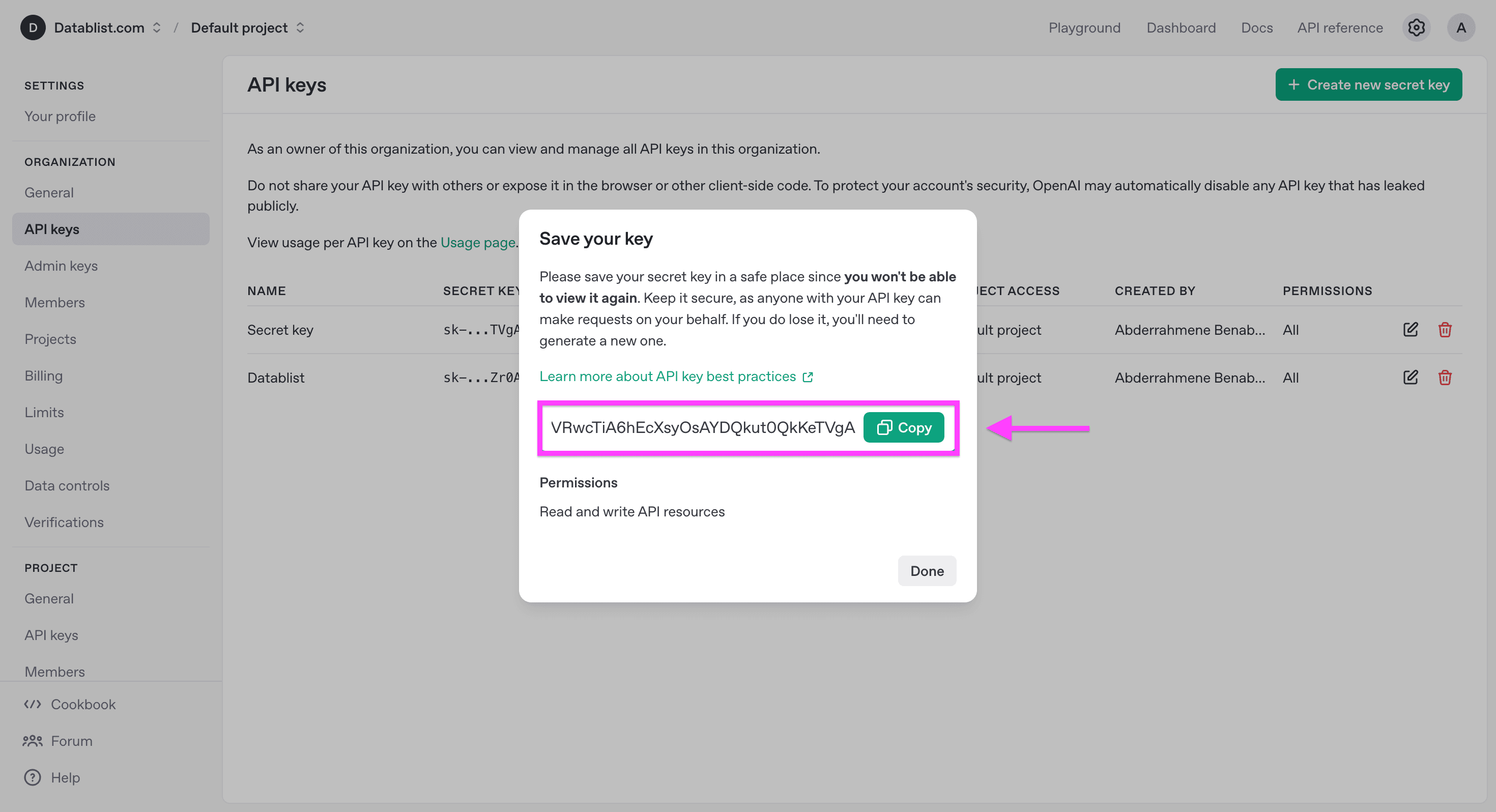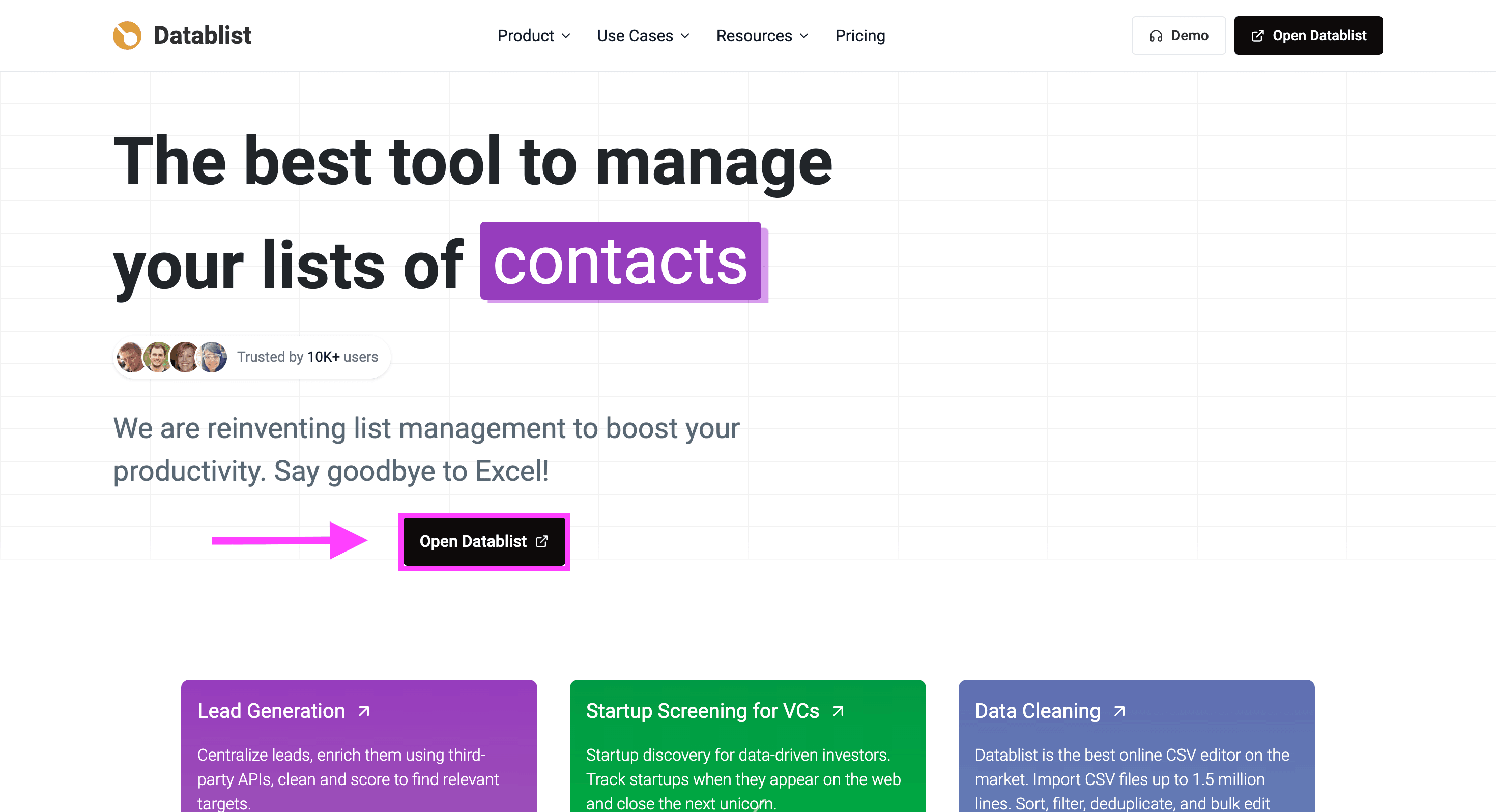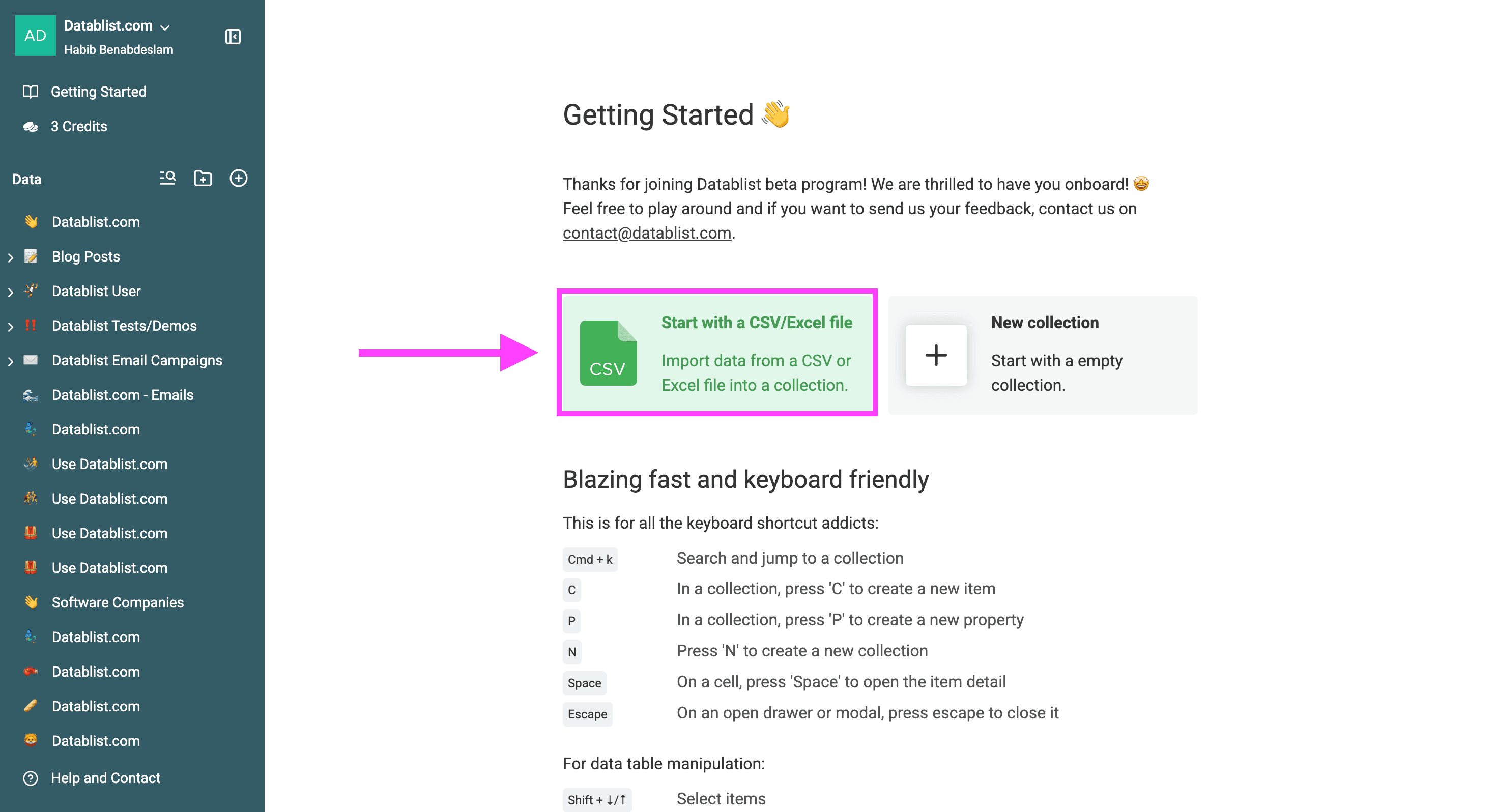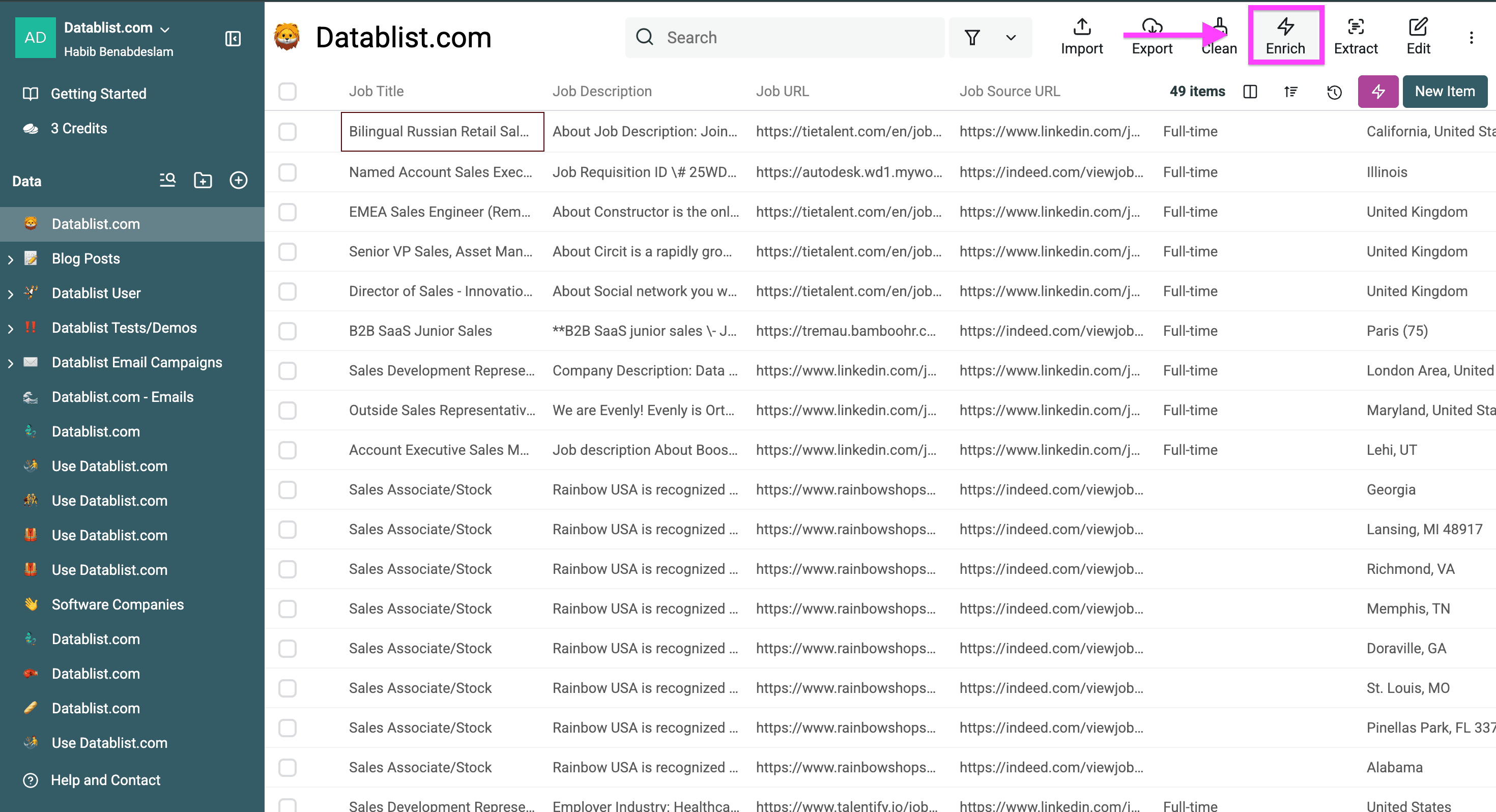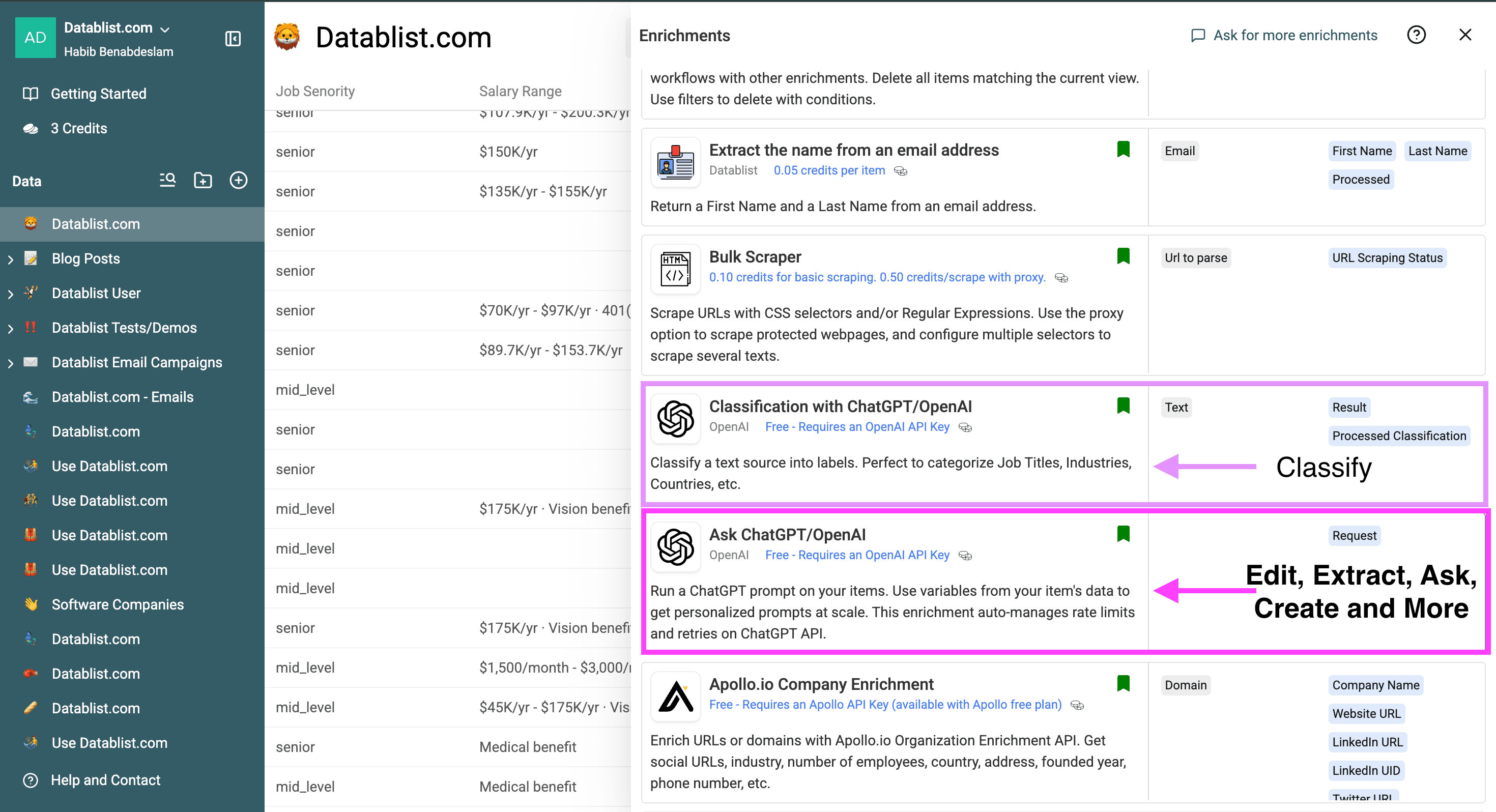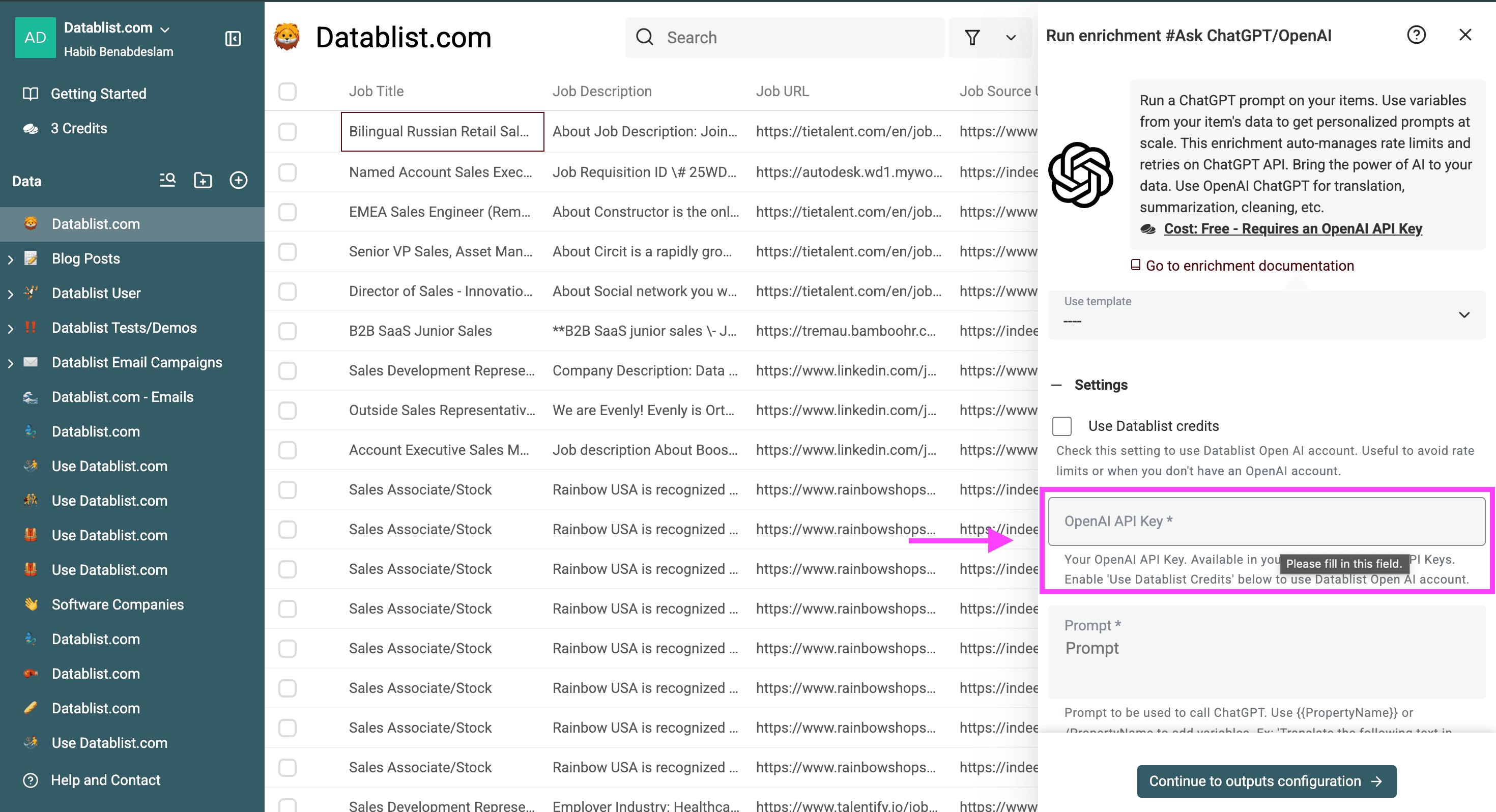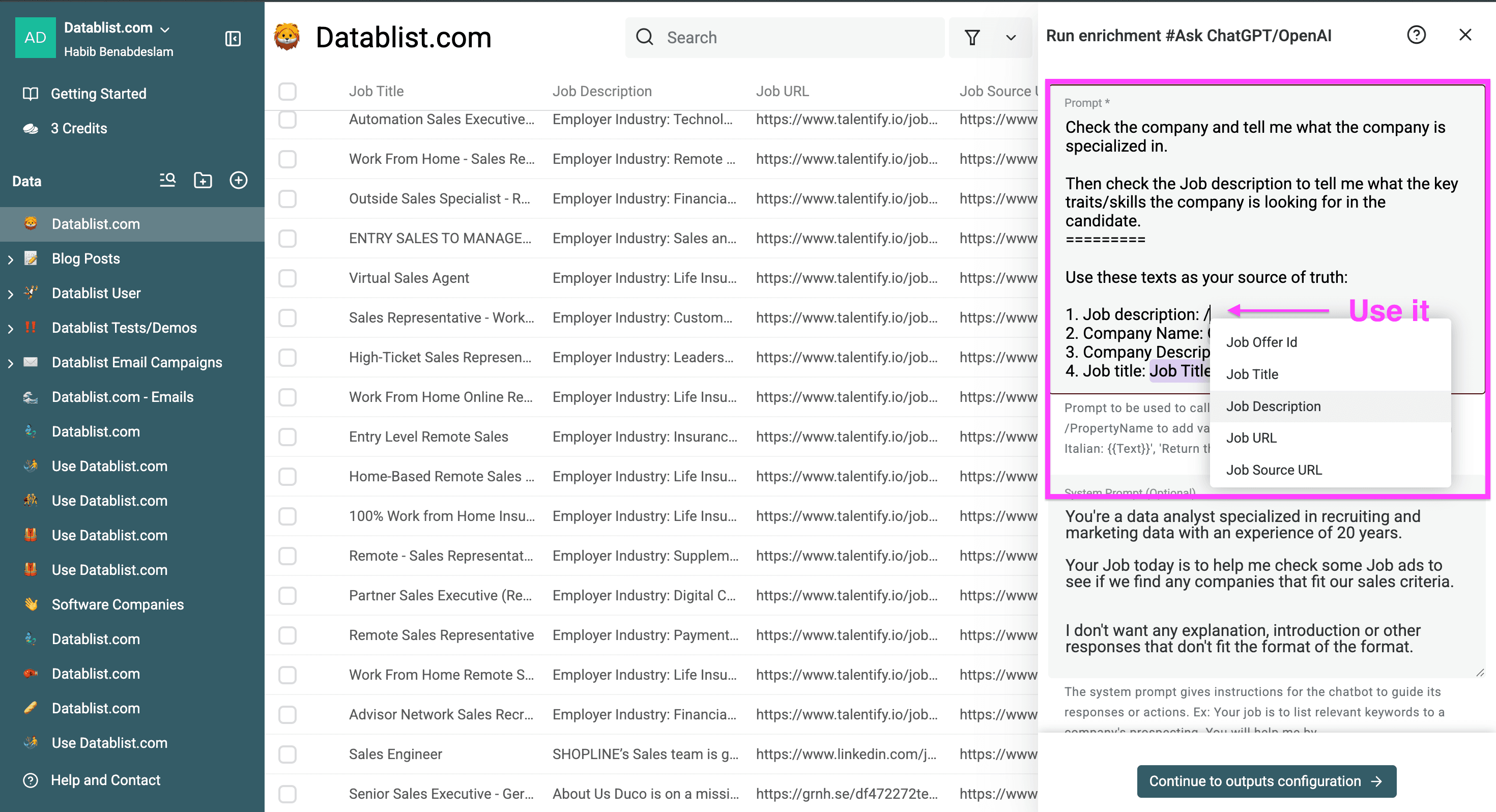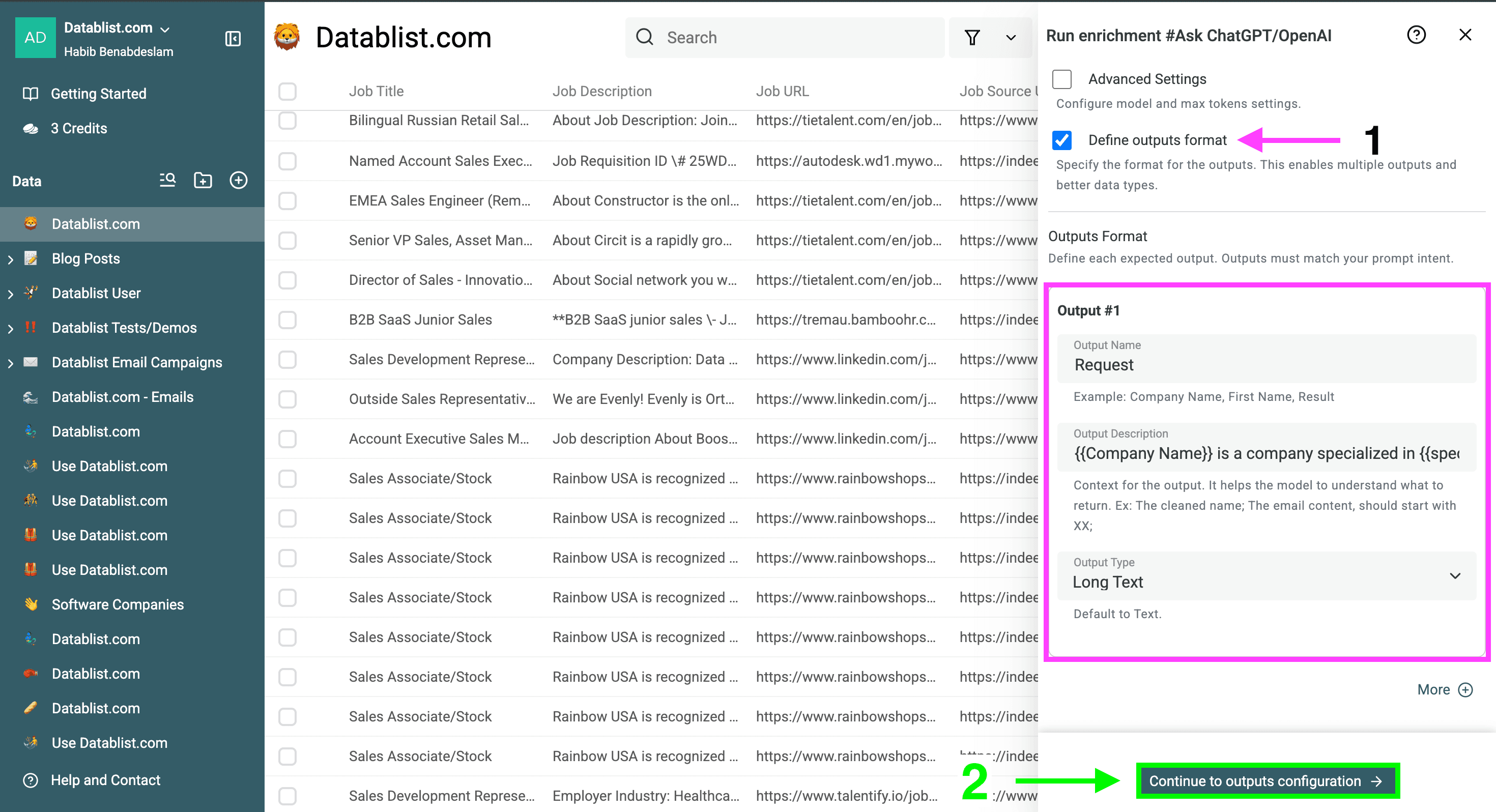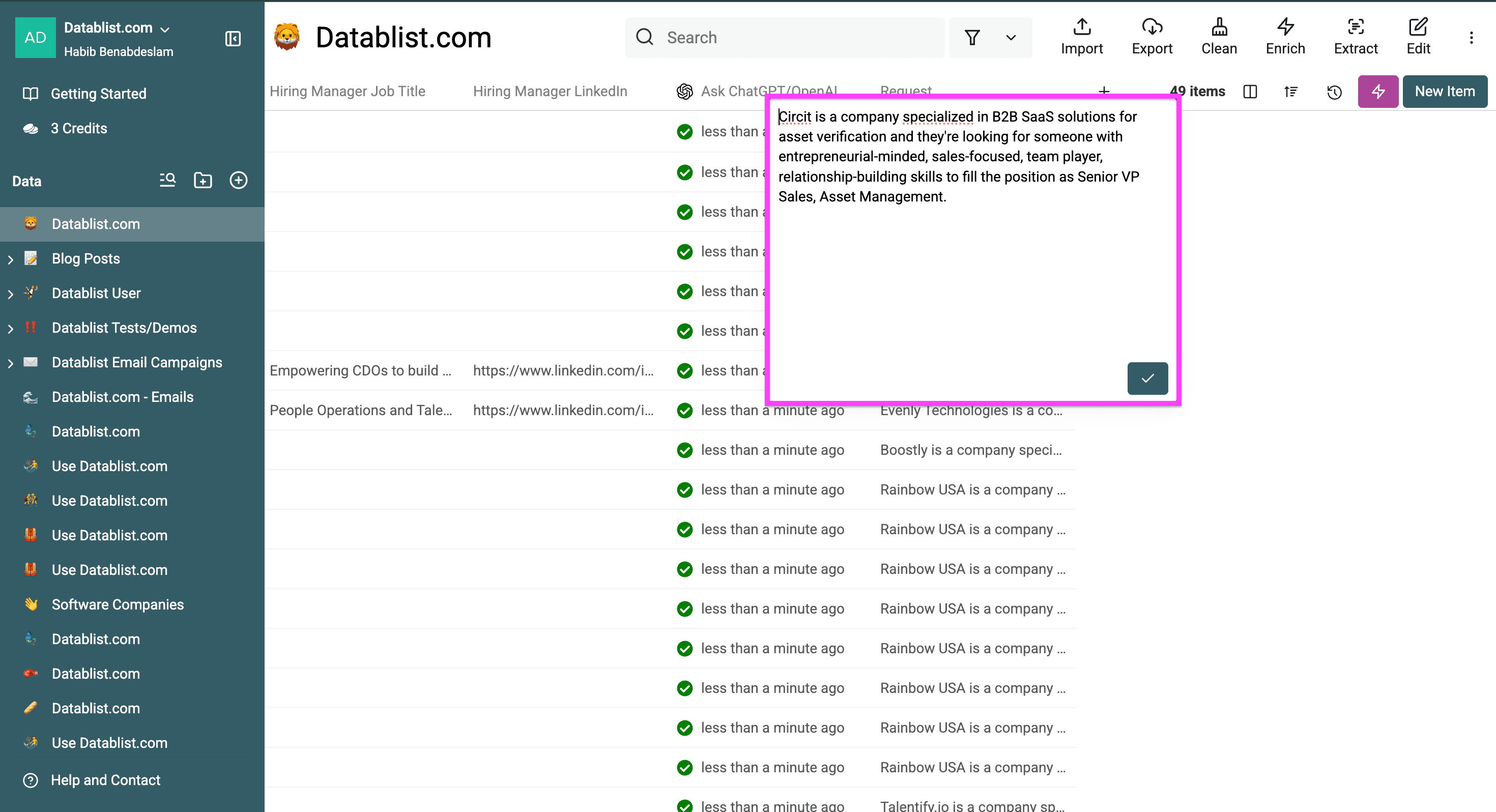Win weeks of your time back cleaning and editing Excel or CSV files with ChatGPT. With Datablist, you can run ChatGPT on every row of your spreadsheet file—without expensive subscriptions or manual copy-pasting.
Most people struggle to use ChatGPT for Excel files. You can upload them to ChatGPT, but the ChatGPT App cannot run a prompt on each row. You can only query the data.
So if you want to run ChatGPT on your Excel or CSV file, you'd have to use one of the Google Sheets plugins or Excel add-ons, which are mostly paid with a monthly subscription, a high usage fee or both.
But with Datablist and using the OpenAI API, you can run ChatGPT prompt for free. And at scale! You only pay on the OpenAI platform for your usage.
In this article, I'll show you how to do it from start to finish.
- How to set up OpenAI’s API for pay-as-you-go usage
- How to run ChatGPT on Excel/CSV files
- How to process thousands of rows without hitting limits
The methods described in this guide work for both CSV and Excel files, making it an ideal guide for anyone looking to run ChatGPT on a spreadsheet.
How to set up OpenAI’s API for pay-as-you-go usage
What is the OpenAI API?
The OpenAI API (Application Programming Interface) is a set of tools and protocols that allows companies to integrate ChatGPT's capabilities directly into their applications.
The API uses a pay-as-you-go model and gives you more control over how the model processes your data, allowing for automated, large-scale operations with better reliability and accuracy than the ChatGPT application.
To use the OpenAI API, you'll need an API key - this is like a unique password that allows your application to securely communicate with OpenAI's services. You can get this key from your OpenAI account dashboard after signing up.
Step 1: Sign up and add credits to your OpenAI account.
Go to the OpenAI Sign-Up Page and create an account.
Go to settings.
You’ll land on the general settings from there you have to go to the billing settings.
Click on “Add to credit balance”
Add $5 Dollar to your credit balance
Step 2: Create an OpenAI API key.
Now go to the API keys section to get your OpenAI api key.
Click on create a new secret key
Keep the Settings simple (default project, all permissions, basic name) click on generate
Copy your secret key.
Always store your API key in a safe place or use a password manager. If you lose it, you won't be able to get it back."
Why not using ChatGPT's App to open Excel Files?
You might wonder: Why can’t I simply upload my Excel file in ChatGPT?
The answer is: You can upload your Excel file in ChatGPT but this works only for small files as the ChatGPT interface isn’t built for large file upload.
And if you do it anyway you’d be able to query your data. Run analysis, find specific rows, or get average values.
But because the file cannot be loaded in ChatGPT context windows, you cannot have results from a prompt added as a new column. Or only on very few rows.
That’s why I recommend you to use the ChatGPT with the API on a free tool like Datablist that help you deal with large CSV and Excel files.
How to run ChatGPT on Excel/CSV files
Step 1: Sign up and import your data.
Go to Datablist and Sign up (It’s Free).
Upload you CSV to run be able to run ChatGPT on CSV file.
Step 2: Use ChatGPT on your Excel items
Click the “Enrich” button.
Select the “Ask/ChatGPT” or “Classification with ChatGPT/OpenAI” enrichment (if you don’t know which one to use go with the “Ask OpenAI/ChatGPT”).
- Select the “Ask ChatGPT/Open” if you want to use ChatGPT to edit or extract Excel items.
- Select the “Classification with ChatGPT/OpenAI” if you want to use ChatGPT to classify Excel items into a limited number of choices.
For this guide, I'll go with "Ask ChatGPT/OpenAI".
Paste your secret OpenAI API key once you've selected the option that suits you best.
To use ChatGPT to edit and extract items from a Excel file, you have to type a prompt or select one of our templates.
- I'll ask it to tell me what the company is specialized in and which skills/traits they're looking for in the perfect candidate
- I always use the system prompt to give AI its role and behavioral guidelines (optional), and the regular prompt for the specific task I want it to fulfill.
Here's why separating them is important:
- Regular Prompt: Contains your specific question or task for that particular interaction, like "Use {{Column}}"
- System Prompt: Acts as persistent instructions that shape how the AI approaches all responses. For example, telling it to "You’re a data analyst specialized in recruiting and marketing data with an experience of 20 years."
Use brackets "{{ }}" or slashes "/" to reference the columns in your collection.
Use the System Prompt to tell ChatGPT to not return explation/comments by added something like: Return the result. No instruction, no comment.
Separating System Prompt from the Regular Prompt helps maintain consistency in the AI's behavior while allowing flexibility in your specific requests. You could think of it as a safety layer to keep the AI operating in the same way.
Step 3: Configure your settings
Next, you'll have the advanced settings to limit the token output or to choose a specific ChatGPT model to run on your Excel file. Here's a brief explanation of these settings:
-
Use the first option if you have very large files and want to control your credits spending for each line — this allows you to forecast the approximate costs of the run while running ChatGPT on thousands of Excel items.
-
Choose your model based on the complexity and amount of data you're planning to process with ChatGPT. For example, use GPT-4o if you want to run ChatGPT on a huge Excel with complex data structures, and choose GPT-4o mini for everything else since it's the most affordable and reliable option for nearly all tasks.
Token configuration and model selection inside datablist -
Define your output format by checking the highlighted box — this setting is optional — use it if you want your output to follow a certain structure.
-
Click on "Continue to output configuration" to configure your output fields (the columns where the data will be stored).
Option to define outputs format
Create a new property or link your responses to an existing one, and click "Instant Run" to configure your run settings.
By configuring your run settings, you can choose whether to use ChatGPT on 1,000 Excel items or just 10 items. Here are the available options:
- Test it on the first 10 items.
- Run it in Async (crucial when running ChatGPT on large Excel files).
- Run ChatGPT on the first 10 items.
- Run ChatGPT on the first 100 items.
- Run ChatGPT on the first {{Custom amount}} items.
Check your response.
Limitations when running ChatGPT on huge Excel files
When you’re planning to run ChatGPT on large Excel files, you need to be aware of OpenAI's API rate limits and usage tiers.
Here's what you need to know:
- Requests per minute/day: With GPT-4o mini, you can make up to 500 requests per minute and 10,000 per day on the usage tier 1. This means you could process 500 Excel rows every minute for 20 minutes.
- Tokens per minute: You're limited to 300,000 tokens per minute. For context, that's roughly equivalent to 225,000 words of text processing capacity.
These limits are more than sufficient for most use cases. For instance, if you're categorizing a 2,000-row Excel file with customer feedback, you could process the entire file in about 4 minutes.
If you need to process larger volumes, you can either spread the requests over time or upgrade your usage tier to usage tier 2 by charging $50 on your credit balance. This works only if your account is older than 7 days old.
If you don't have the time to wait 7 days, you can also use Datablist's account by using Datablist credits for your requests.
Conclusion
Running ChatGPT on an Excel file is easy and doesn’t require technical experience, you have just to create an OpenAI API key and add $5 to your credit balance then you’ll be able to use it to run ChatGPT on thousands of Excel items without needing a monthly subscription.
Key Takeaways
- ChatGPT's web interface can handle Excel file uploads.
- The described workflow works seamlessly for both CSV and Excel files.
- Using the OpenAI API through a Datablist CSV editor offers better accuracy for processing large files.
- The pay-as-you-go with OpenAI API is more cost-effective than subscription-based Excel and Google-Sheet plugins.
- AI can read and edit even large Excel files with high accuracy if you run ChatGPT on each row.
Frequently Asked Questions
How can I use ChatGPT with Excel files?
You can use ChatGPT with Excel files through the OpenAI API and tools like Datablist. This allows you to process large datasets more efficiently than using the ChatGPT web interface.
What is the limit of rows that I can process?
You can process hundred of thousands rows. However, be mindful of rate limits. And process a smaller chunk of data to iterate on your prompt before running it on your full data.
Do I need coding knowledge to use ChatGPT with Excel?
No, you don't need coding knowledge. Tools like Datablist provide a user-friendly interface to connect ChatGPT with your Excel files without any programming required.
How much does it cost to use ChatGPT with Excel files?
Starting with a $5 credit balance on your OpenAI API account is sufficient for processing thousands of Excel rows. The exact cost depends on your usage and the GPT model selected.
Can ChatGPT help analyze customer feedback in Excel?
Yes, ChatGPT can effectively analyze customer feedback in Excel, helping categorize responses, extract sentiments, and identify common themes in your data.
What's the difference between using ChatGPT's website and API for Excel files?
The API provides usage based cost compared to uploading files directly to ChatGPT's website, which has limited file handling capabilities and have a fixed amount subscription (GPT Plus).

